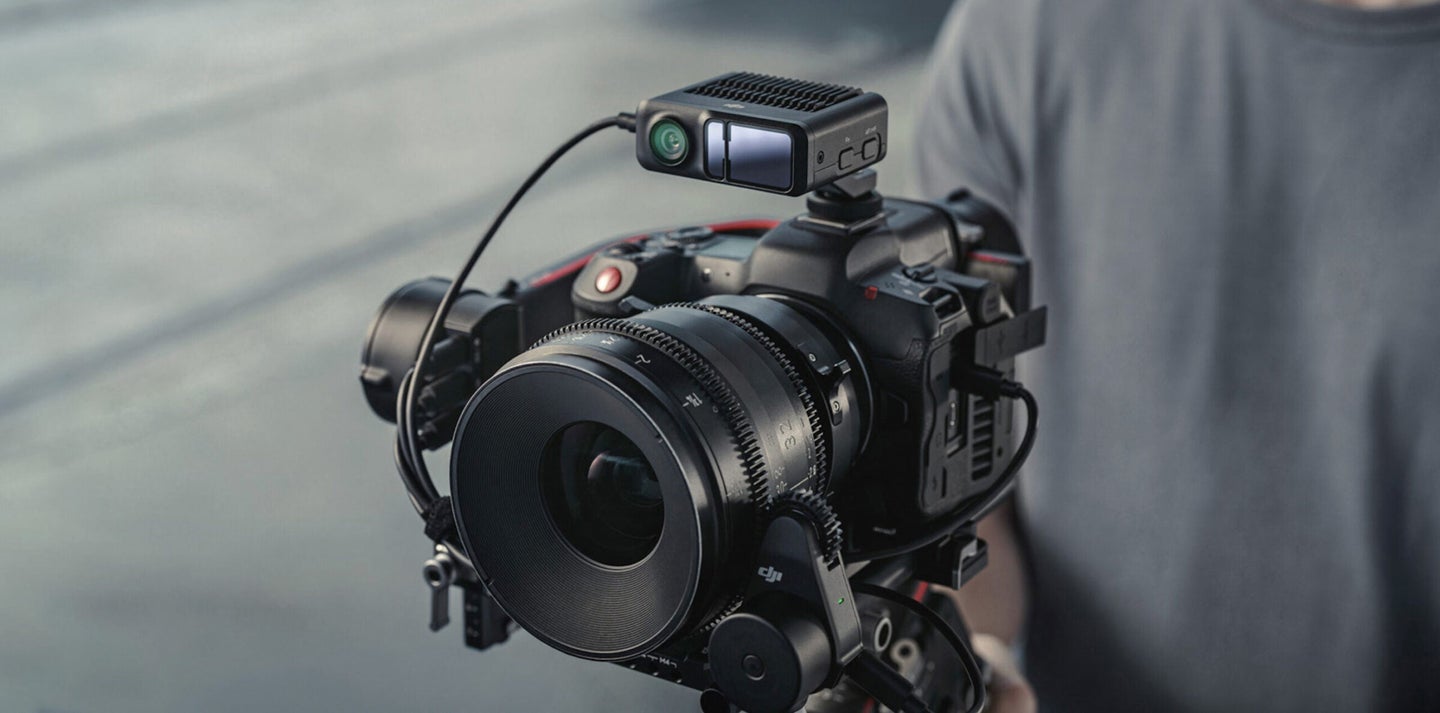The new DJI RS 3 Pro gimbal uses LiDAR to make any lens AF-capable
Plus: DJI's nifty new wireless video monitor doubles as a remote camera control.

Serious amateur and professional videographers know that a day on set often moves quickly, with little time to waste and plenty of moving parts—literally and figuratively. To address the needs of filmmakers, DJI has introduced three products including two new Ronin-branded gimbals—the RS 3 and RS 3 Pro—and a nifty new wireless video monitoring system.
Related: Best cameras for filmmaking on a budget
The DJI RS 3 & DJI RS 3 Pro
The DJI RS 3 and 3 Pro share many of the same features, with a couple of key differences that give the 3 Pro a little bump. Both have a redesigned, automated axis locking system, activated when the gimbal is powered on to quickly release and unfold. And quick-release plates now have position memory, so the camera operator doesn’t need to rebalance between shots.

Notably, a Bluetooth shutter button removes the need for a cable and enables remote control. They also use a third-generation RS Stabilization Algorithm, which DJI reports show a 20% improvement over the previous RSC 2. With this technology, it is easier for filmmakers to capture low angles and film while in motion (running, in vehicles). SuperSmooth mode also provides additional stabilization for lenses up to 100mm.
Another improvement is the 1.8-inch OLED full-color touchscreen, which offers 80% more surface area than the previous generation. A physical switch allows users to toggle between modes (Pan Follow, Pan and Tilt Follow, FPV), and the gimbals boast a 12-hour battery life.

The RS 3 weighs just under 2.8 pounds and accommodates a payload of up to 6.6 pounds, which includes the majority of non-cinema cameras. The RS 3 Pro is a little heftier, weighing 3.3 pounds with a 10-pound payload. It’s cut from a single piece of carbon fiber and was built to handle the Sony FX6, Canon C70, and Red Komodo, among others.
LiDAR sets the RS 3 Pro apart
An important feature that differentiates the RS 3 Pro is its use of LiDAR Range Finder technology, borrowed from the Ronin 4D, which gives filmmakers the ability to autofocus manual lenses. Using 43,200 ranging points in a 14-meter (~46-foot) area, the focus motor makes it easier to accurately focus and removes the need for repeated calibration. The new iteration of ActiveTrack Pro now has 60 times the computing power of the previous version.
The DJI Transmission System

R3 Pro owners will be able to use the new DJI Transmission System to remotely control their gimbal and camera. It’s packaged as an all-in-one solution that functions as a video receiver, monitor, controller, and recorder. The unit’s O3 Pro transmission technology provides low latency; live audio monitoring at 16-bit 48kHz; video transmission at 1080p/60fps; and a 20,000-foot transmission distance. There are 23 channel options, and the system will automatically switch to the most optimal one based on its reading of the electromagnetic environment.
The seven-inch Bright Remote Monitor has an integrated receiver. In Control Mode, one can remotely operate the camera and gimbal while monitoring from up to two receivers at the same time. Broadcast Mode can be implemented on top of Control Mode and allows for the use of unlimited receivers, making it ideal for large crews.

How to buy the new DJI products
The DJI RS 3 and RS 3 Pro are available immediately from the DJI website as well as authorized retailers.
The standalone RS 3 retails at $549 and includes the gimbal, BG21 grip, USB-C charging cable, lens-fastening support, extended grip/tripod, quick release plates, a multi-camera control cable, and screw kit. The Combo sells for $719. In addition to everything in the standalone kit, the Combo comes with a briefcase handle, focus motor, focus motor rod kit, focus gear strip, second multi-camera control cable, and a carrying case.

As for the RS 3 Pro, the standalone costs $869. In the box are a gimbal, BG30 grip, USB-C charging cable, lens-fastening support, extended grip/tripod, quick-release plates, briefcase handle, multi-camera control cable, screw kit, and carrying case. The Combo runs at $1,099, and in addition to the standalone kit throws in an extended quick release plate, phone holder, focus motor, focus motor rod kit, focus gear strip, Ronin Image Transmitter, two hook and loop straps, plus extra cables.
The DJI Transmission suite will be released come September, with the Combo selling at $2,499. It comes with one DJI video transmitter, High-Bright remote monitor, a remote monitor hood, an installation toolkit, protector case, two WB37 intelligent batteries, one WB37 battery charging hub, plus other cables and battery adapters. Those who wish for individual pieces of the equipment can purchase a transmitter for $1,699 and the monitor for $1,099.
